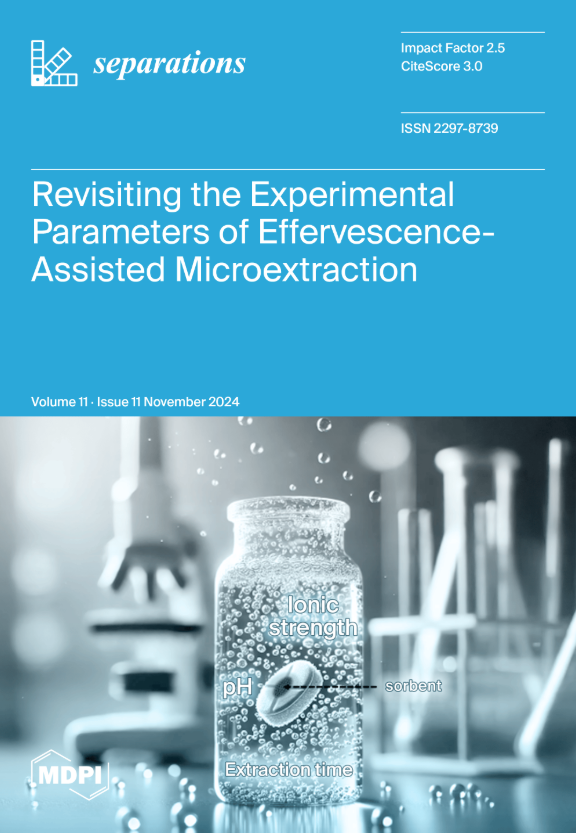Identifying the Early Post-Mortem VOC Profile from Cadavers in a Morgue Environment Using Comprehensive Two-Dimensional Gas Chromatography
IF 2.7
4区 工程技术
Q3 CHEMISTRY, ANALYTICAL
引用次数: 0
Abstract
Understanding the VOC profile released during the early post-mortem period is essential for applications in training human remains detection dogs and urban search and rescue operations (USAR) to rapidly locate living and deceased victims. Human cadavers were sampled at the UQTR morgue within a 0–72 h post-mortem interval. VOC samples were collected from the headspace above the cadavers, using Tenax TA/Carbograph 5TD dual sorbent tubes, and analyzed using GC×GC-TOFMS. Multiple data processing steps, including peak table alignment and filtering, were undertaken using LECO ChromaToF and custom scripts in R programming language. This study identified 104 prevalent VOCs, some of which are linked to human decomposition, while others are connected to the persistence of living scent. Principal Component Analysis (PCA) further highlighted that VOC profiles can change dynamically over time, even in a controlled setting. The findings underscore the complexity and variability in VOC profiles during the early post-mortem period. This variability is influenced by multiple factors including the individual’s biological and physiological conditions. Despite the challenges in characterizing these profiles, the identified VOCs could potentially serve as markers in forensic applications. The study also highlights the need for additional research to build a dataset of VOCs for more robust forensic applications.利用综合二维气相色谱法鉴定停尸房环境中早期尸体的挥发性有机化合物特征
了解死后早期释放的挥发性有机化合物特征对于训练人类遗骸探测犬和城市搜索和救援行动(USAR)的应用至关重要,以快速定位活着的和死去的受害者。人类尸体在死后0-72小时内在UQTR停尸房取样。使用Tenax TA/Carbograph 5TD双吸附管从尸体上方收集VOC样本,并使用GC×GC-TOFMS进行分析。多个数据处理步骤,包括峰表对齐和过滤,使用LECO chroof和自定义脚本在R编程语言进行。这项研究确定了104种普遍存在的挥发性有机化合物,其中一些与人体分解有关,而另一些则与活气味的持久性有关。主成分分析(PCA)进一步强调,即使在受控环境下,VOC配置文件也会随时间动态变化。研究结果强调了在早期的死后阶段VOC概况的复杂性和可变性。这种可变性受到多种因素的影响,包括个人的生物和生理条件。尽管在表征这些特征方面存在挑战,但鉴定出的挥发性有机化合物有可能作为法医应用中的标记物。该研究还强调需要进一步研究,以建立一个更强大的法医应用的VOCs数据集。
本文章由计算机程序翻译,如有差异,请以英文原文为准。
求助全文
约1分钟内获得全文
求助全文
来源期刊

Separations
Chemistry-Analytical Chemistry
CiteScore
3.00
自引率
15.40%
发文量
342
审稿时长
12 weeks
期刊介绍:
Separations (formerly Chromatography, ISSN 2227-9075, CODEN: CHROBV) provides an advanced forum for separation and purification science and technology in all areas of chemical, biological and physical science. It publishes reviews, regular research papers and communications. Our aim is to encourage scientists to publish their experimental and theoretical results in as much detail as possible. There is no restriction on the length of the papers. The full experimental details must be provided so that the results can be reproduced. There are, in addition, unique features of this journal:
Manuscripts regarding research proposals and research ideas will be particularly welcomed.
Electronic files and software regarding the full details of the calculation and experimental procedure, if unable to be published in a normal way, can be deposited as supplementary material.
Manuscripts concerning summaries and surveys on research cooperation and projects (that are funded by national governments) to give information for a broad field of users.
The scope of the journal includes but is not limited to:
Theory and methodology (theory of separation methods, sample preparation, instrumental and column developments, new separation methodologies, etc.)
Equipment and techniques, novel hyphenated analytical solutions (significantly extended by their combination with spectroscopic methods and in particular, mass spectrometry)
Novel analysis approaches and applications to solve analytical challenges which utilize chromatographic separations as a key step in the overall solution
Computational modelling of separations for the purpose of fundamental understanding and/or chromatographic optimization
 求助内容:
求助内容: 应助结果提醒方式:
应助结果提醒方式:


